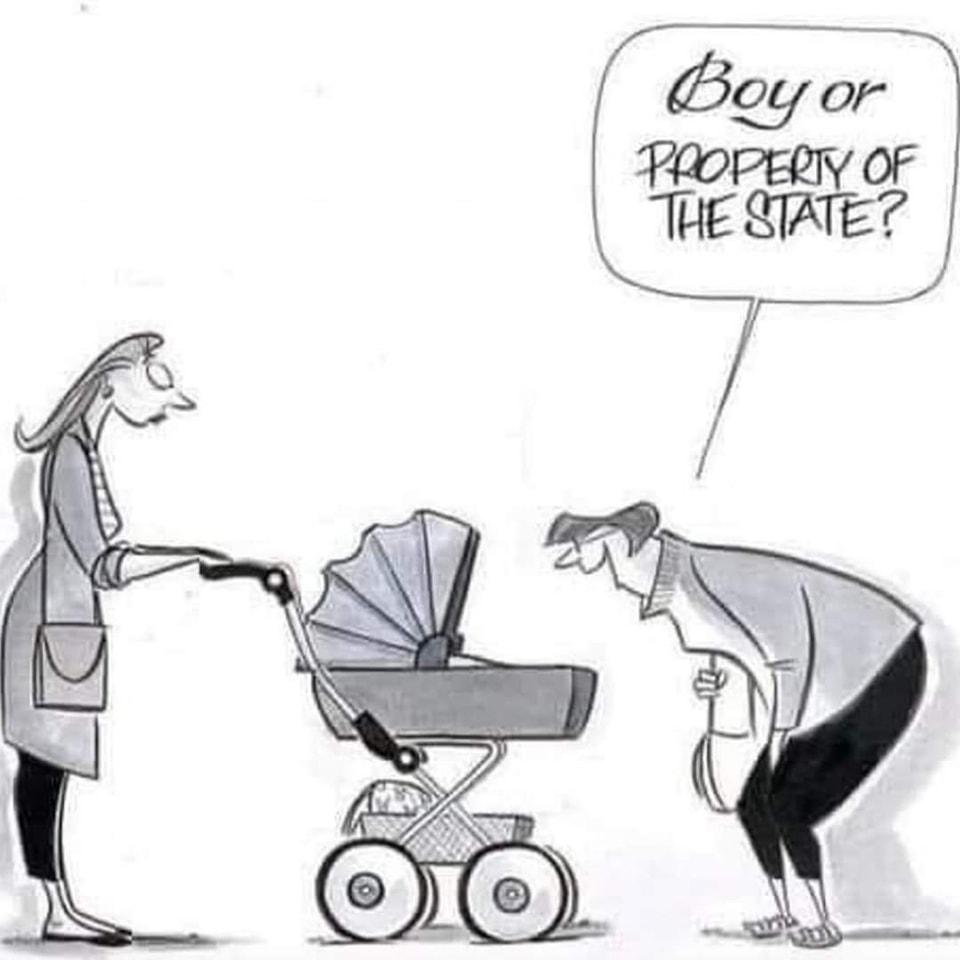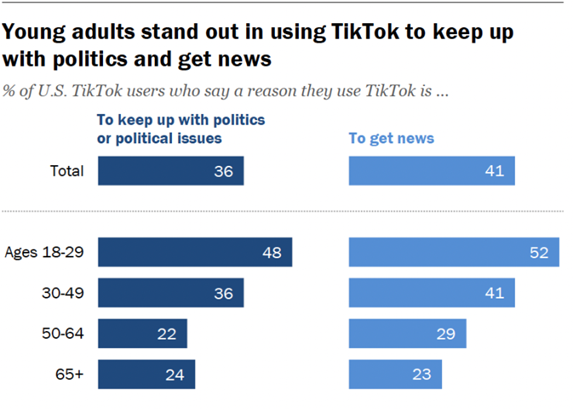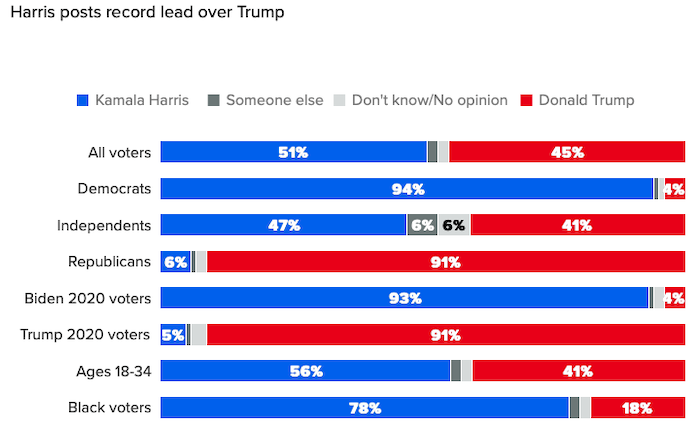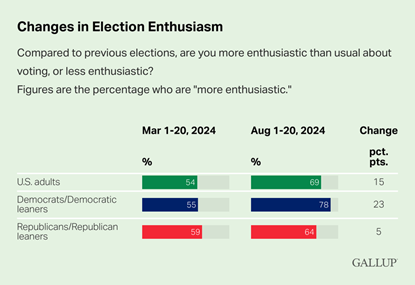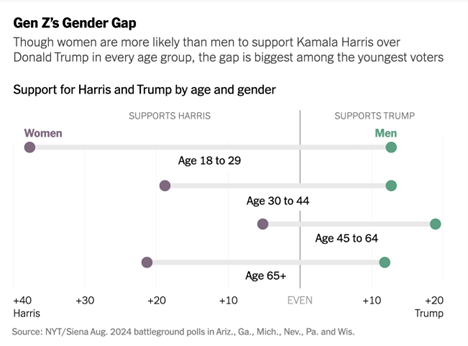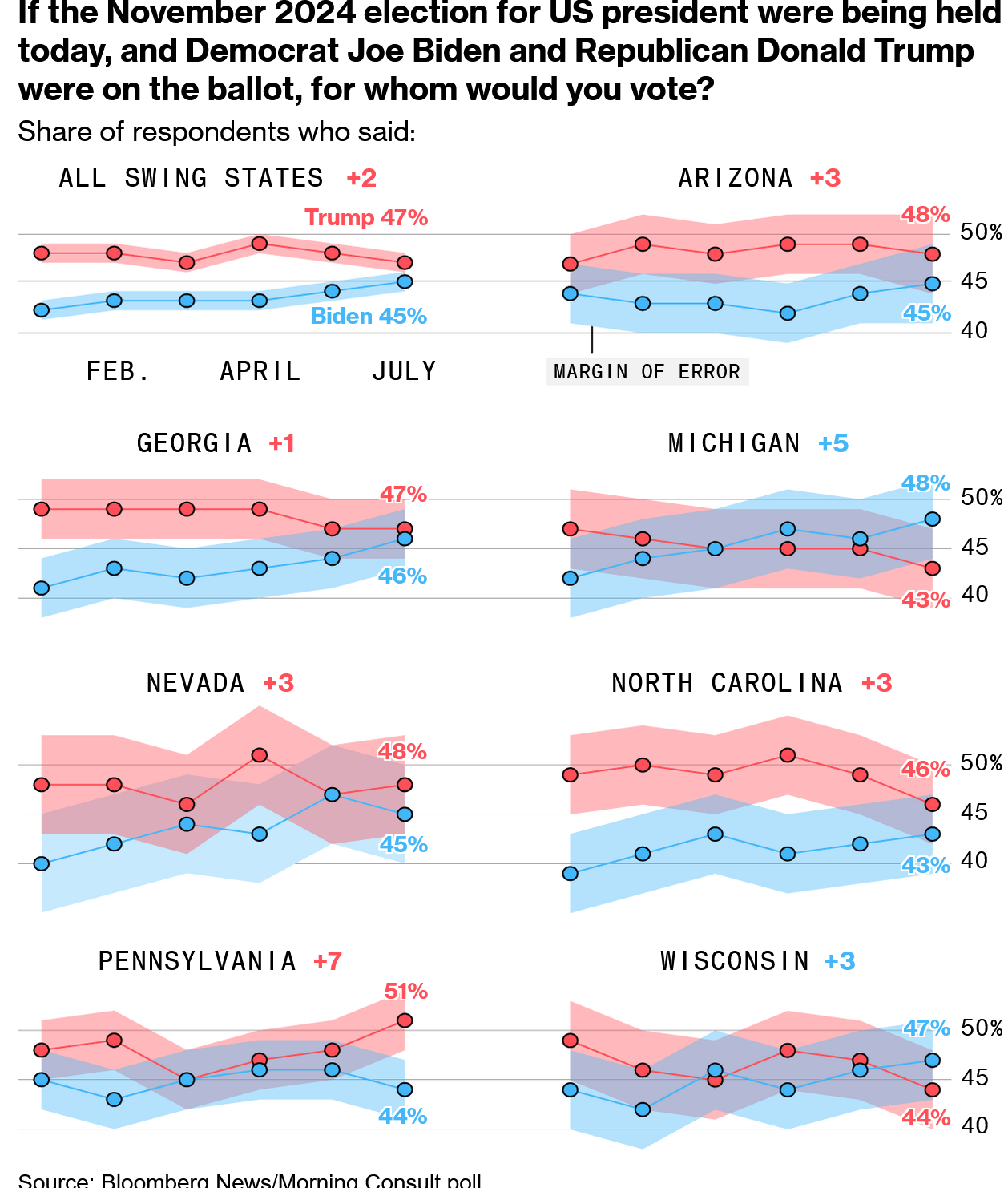The Daily Escape:

Camden Public Library, Camden, ME – September 2024 photo by Daniel F. Dishner Photography
When projecting economic outcomes, economists always caution about “Black Swan” events. While the term has been around hundreds of years, today it means an unforeseen but consequential event. Two potential Black Swan events occurred last week.
The assassination of Hezbollah’s leader Hassan Nasrallah and Israel’s seeming willingness to keep expanding operations against Lebanon seems very risky. Biden seems incapable of stopping Netanyahu from widening the war against Hamas and Hezbollah, and it’s clear that Netanyahu has never been a good faith negotiator regarding a cease fire. Harris now has to worry about how this impacts her campaign in Michigan.
The floods caused by the remnants of Hurricane Helene could be another “Black Swan”, although it’s difficult to see which candidate it will impact more severely. The flooding disproportionately affected the rural areas that Trump needs to win to keep North Carolina in the red column. Although heavily blue areas like Asheville also will still be recovering in early November. Here’s a map of power outages as of 9/28:
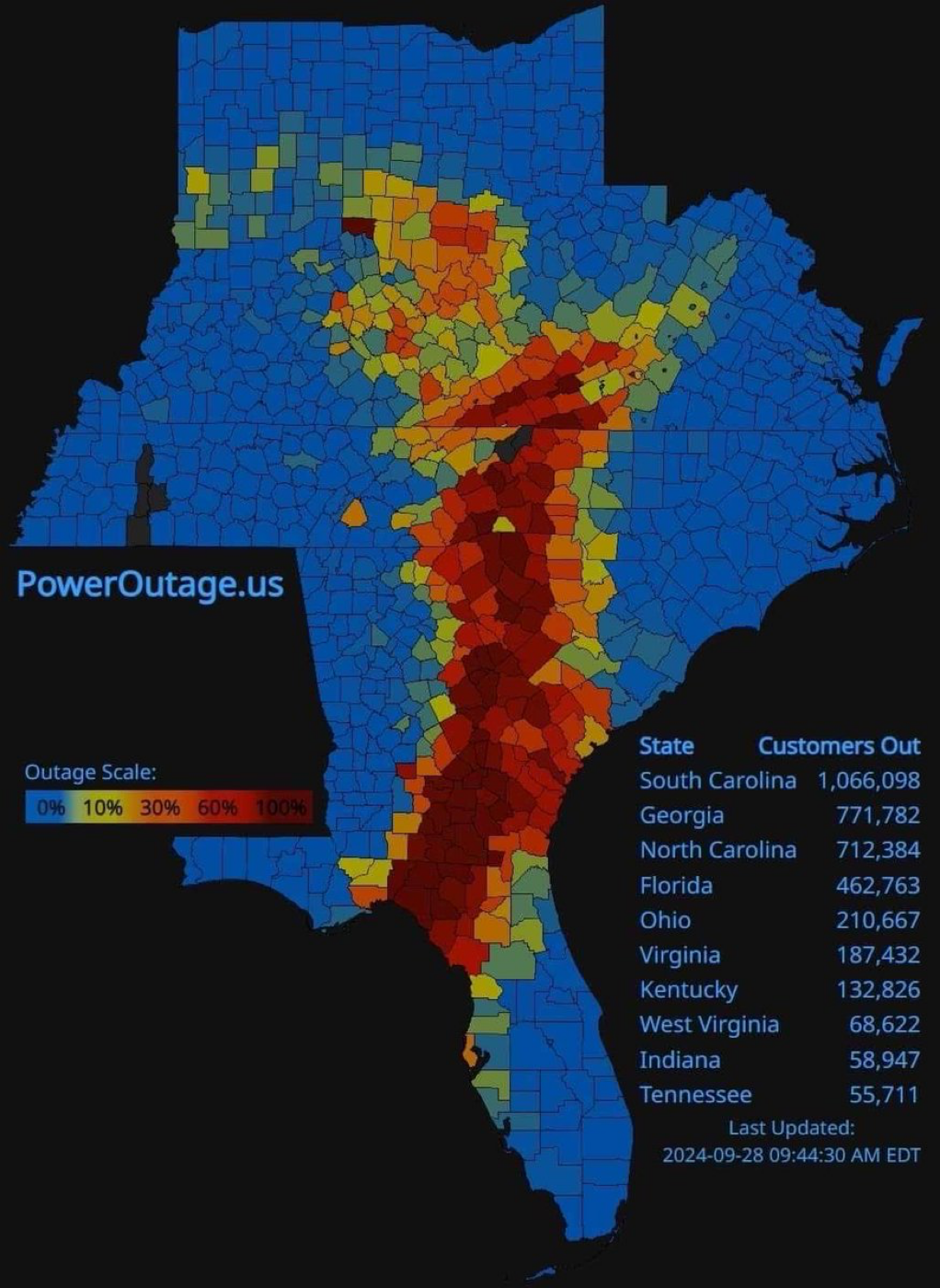
That said, the response to Helene may also highlight to voters the importance of FEMA and NOAA, both of which Project 2025 aims to defund. There are plenty of ads now running that emphasize that Project 2025 would defund NOAA. If the Feds can respond to the damage on I-40 like they did to I-95 in PA or Baltimore’s Francis Scott Key Bridge disaster, it may convince people in North Carolina that the government actually can be helpful.
Trump’s growing increasingly unhinged in public appearances is difficult to overlook. He’s adopted fascist language. Overall, he looks both weak and violent, but the mainstream press isn’t persistently covering him in that way. Its clear on Twitter that his crowds are smaller and are increasingly disengaged.
Lets turn to Elon Musk who tweeted this to his tech bros:
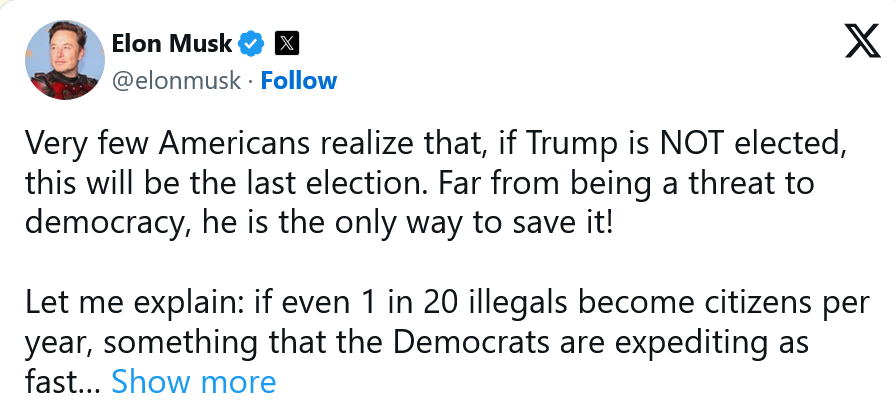
Let’s deconstruct this almost impossibly stupid thought:
- People who enter illegally are not eligible for citizenship and non-citizens cannot and do not vote in federal elections.
- People who are granted asylum can’t vote unless they become citizens, which takes ~5 years.
- Even the most generous immigration reform proposal (which is unlikely to pass both Houses of Congress) would only apply to undocumented immigrants who’ve been here for years. And citizenship would require paying a fine, extensive background check, and going to the back of the line behind legal immigrant applicants – a process that could take a decade.
- Currently, most of the undocumented population is of Hispanic origin – a demographic whose voting patterns have been moving to the right, not the left.
This is the same guy who after the second Trump assassin was arrested posted on Twitter:
“And no one is even trying to assassinate Biden/Kamala.”
And this guy has a top security clearance! Musk’s companies, including SpaceX and its subsidiary Starlink, have a $4 billion contract with NASA and multimillion-dollar contracts with the Defense Department.
But there’s a bigger picture in play with a few wealthy South Africans who have joined the tech bros world: Elon Musk lived in apartheid South Africa until he was 17. David Sacks, the venture capitalist who has become a fundraiser for Trump and a troll of Ukraine, left at age five, and grew up in a South African diaspora family in Tennessee. Peter Thiel spent his childhood in South Africa and Namibia, where his father was involved in uranium mining as part of the apartheid regime’s clandestine drive to acquire nuclear weapons.
And Paul Furber, an obscure South African software developer and tech journalist living near Johannesburg, has been identified by two teams of forensic linguists as the originator of the QAnon conspiracy, which helped drive Trump’s Maga movement.
In short, four of Maga’s most influential voices are fifty-something white men who grew up in apartheid South Africa.
And what connects these men’s South African backgrounds with Maga? South Africa under apartheid offered an extreme version of some of what are now important themes of what Republicans want American life to look like today: Income inequality as the natural order of things and a contempt for government.
This is what the rich guys who support Trump want, and a few of the most influential rich guys grew up under apartheid.
Finally, Rachel Bitecofer, a political analyst who in July 2019 predicted that Trump would lose the 2020 election, with the Democratic candidate winning at least 278 electoral votes, has comments on polling that Wrongo hasn’t seen elsewhere about how older people are turning towards Harris:
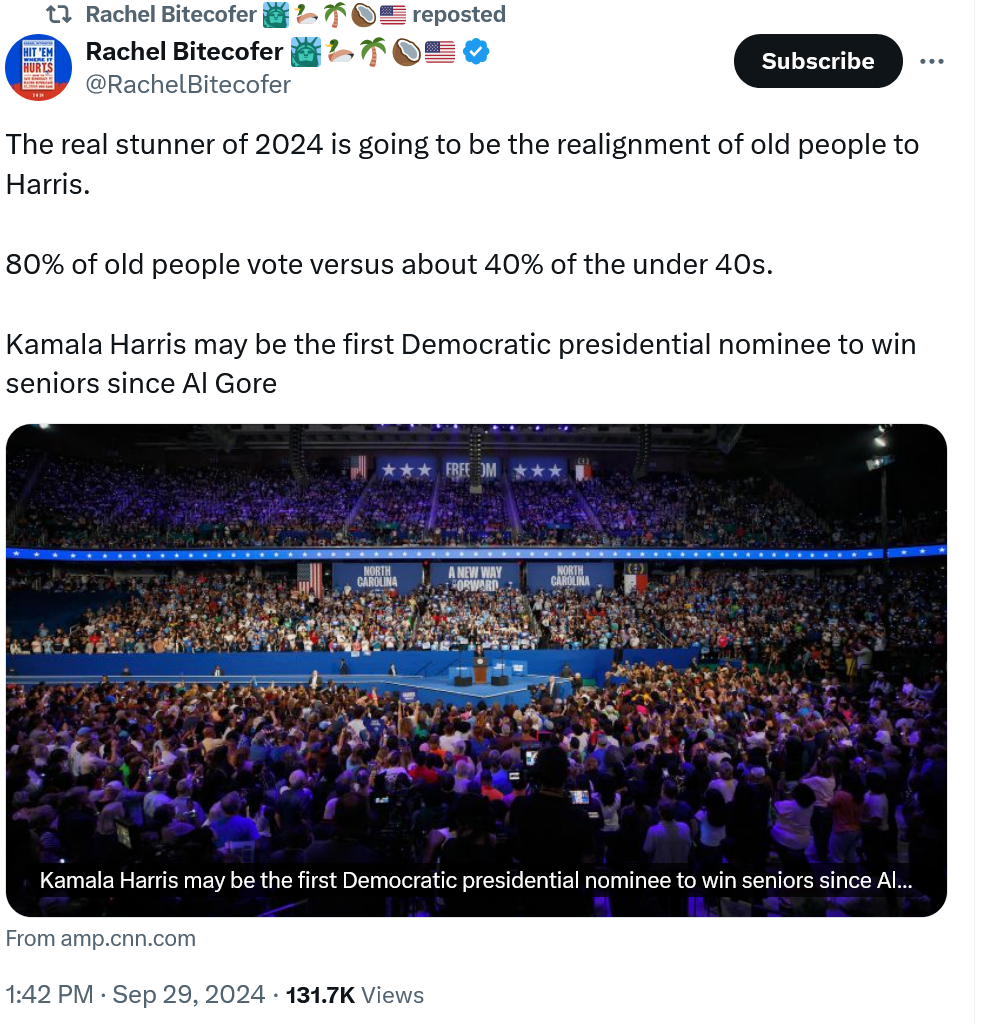
If true, it will be helpful.

